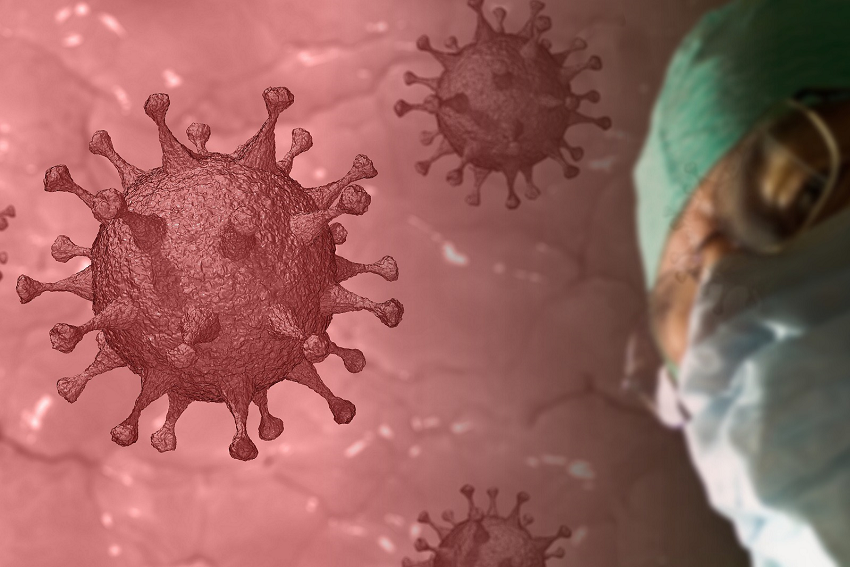New low cost COVID-19 antibody test

New research from the AUT Centre for Kode Technology Innovation and our collaborating R&D partners has developed a low-cost COVID-19 antibody test using existing blood testing infrastructure. The test uses Kode™ Technology to change the surface of red blood cells ‘kodecytes’, allowing blood testing to detect an immune response to COVID-19.
The journal article detailing the research; “COVID-19 antibody screening with SARS-CoV-2 red cell kodecytes using routine serologic diagnostic platforms” will be published by the prestigious international journal Transfusion.
In this research, funded by the NZ Ministry of Business, Innovation & Employment COVID-19 Innovation Acceleration Fund and the Intramural Research Program of the NIH Clinical Center, selected shapes from the outside of the SARS-CoV-2 virus (the COVID-19 virus) were copied and turned into a synthetic paint (Kode™ Technology) to modify the outside of red blood cells.
By modifying a red cell so that it also looks like the outside of the COVID-19 virus and by using routine blood banking laboratory infrastructure, our Kode™ Technology diagnostic can be rapidly implemented at low cost for mass population screening, and to find blood donors with therapeutic antibodies suitable for clinical use.
When these modified red cells are used on blood banking diagnostic machines and tested against blood samples, they will react if the person is immune to the virus. That is, antibodies against COVID-19 present in an immune person’s blood will react with red cells painted to look like the COVID-19 virus.
In order to ensure as many countries as possible have access to the technology, Kode Biotech will not enforce its intellectual property rights against diagnostic platform developers, provided they source Kode constructs from an authorised supplier.
The first prototype version of the assay is currently undergoing extensive clinical evaluation at the worlds’ foremost medical research centre, the National Institutes of Health (NIH) Clinical Center, USA, and commercial product development is underway at Immulab Pty, Ltd, in Australia.
Cell interactions and Kode™ Technology
Life as we know it is typically made up of cells, each a small package with a biological function, and when associating with other cells as a massive community of more than 30 trillion cells, can become an organism as complex as a human. All forms of life must have some ability to sense and potentially communicate with their environment to be able to survive and replicate. Because cells do not have “eyes” they instead have to use other forms of communication with their environment. Some cells use electrical and chemical signals, while others also use more intimate forms of communication where they feel each other’s surface for information – a kind of cell 3D braille. Life for the cells, especially those that are mobile, is like being in a tactile maze.
Perhaps the most commonly recognised form to this tactile communication is when cells feel the surface of microbes which invade our body, and then use this 3D shape information to build magic bullets (antibodies) which recognize these shapes and can selectively attack the invading microbes. However, there are many other normal (and disease process) biological interactions within our bodies where cells chat or yell at each other by reading and communicating with shapes on their surface. In many respects, much of biology is based on shape interactions.
Kode™ Technology copies some of the specific shapes present on the outside of biological cells, bacteria or viruses and then applies them to a different cell in the form of a biological paint. It is a biological shape-paint that can be used to change the 3D braille messages on surfaces.
In our publication, Kode copied selected shapes from the outside of the SARS-CoV-2 virus (the COVID-19 virus) and turned them into a synthetic paint to modify the outside of red blood cells. These modified red cells can then be used in the machines that laboratories currently use to look for antibodies that may affect the success of a blood transfusion, or cause hemolytic disease of the newborn; except this time a result will say if the patient is immune to COVID-19.
Other examples of the use of Kode™ Technology shapes paints include a cancer therapeutic which is designed to teach your body to recognise and mount a personalised immune response to your own tumour. In this setting, the Kode shape paint is based on 3D structures normally present on animal tissue, and when your tumour is painted your body is tricked into thinking it has been invaded by animal tissue. As your body is already immunised to animal tissue, it mounts a rapid attack on the “painted tumoir”. This aggressive immune attack is designed to stimulate and heat-up your immune system to recognize your cancers unique signatures, and then later mount an immune response to destroy your cancer. This technology is currently in Phase 2 clinical trial by the technology licensee BiolineRx.
View the full article published in Transfusion
Read the New Zealand Herald article
Useful links